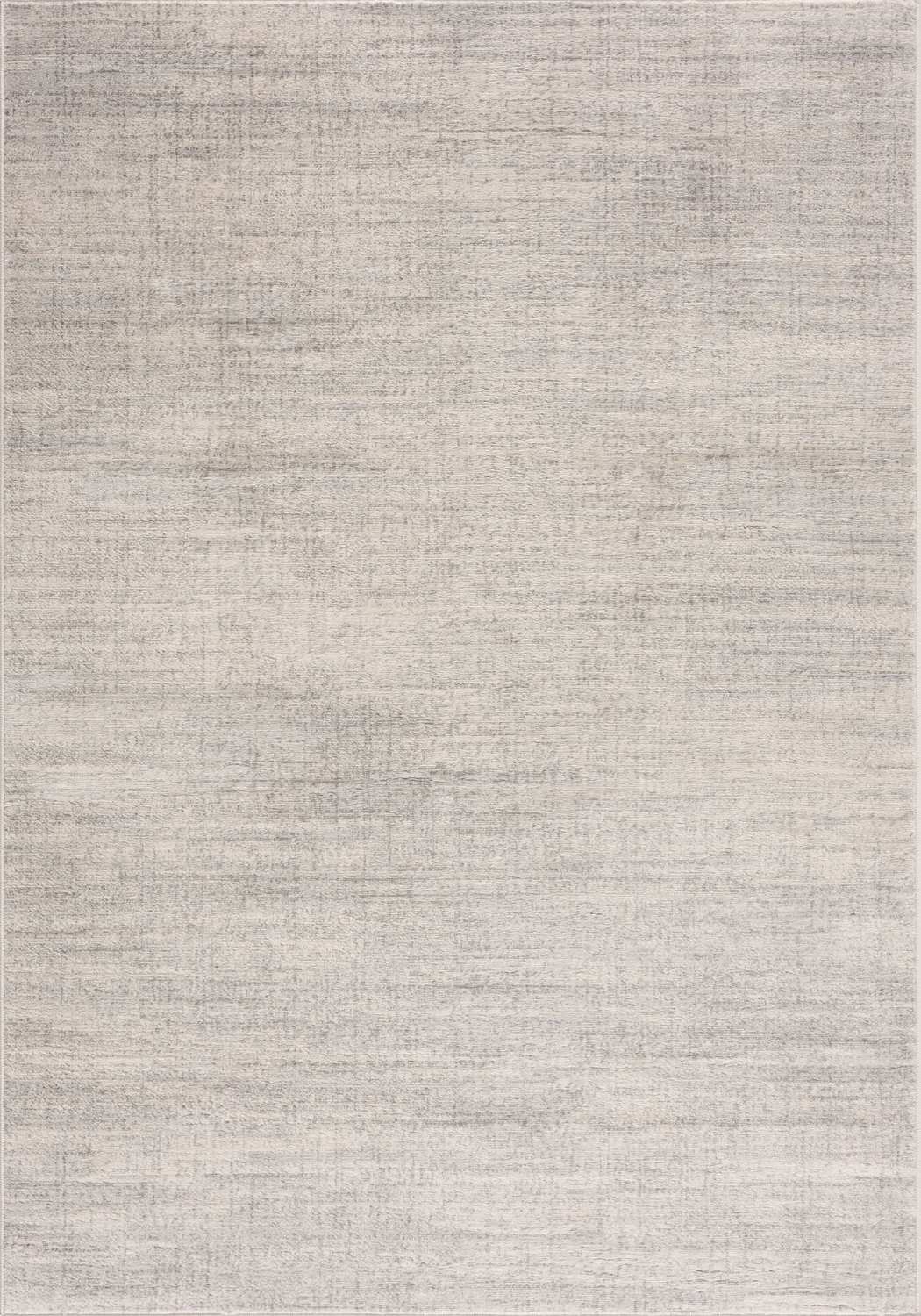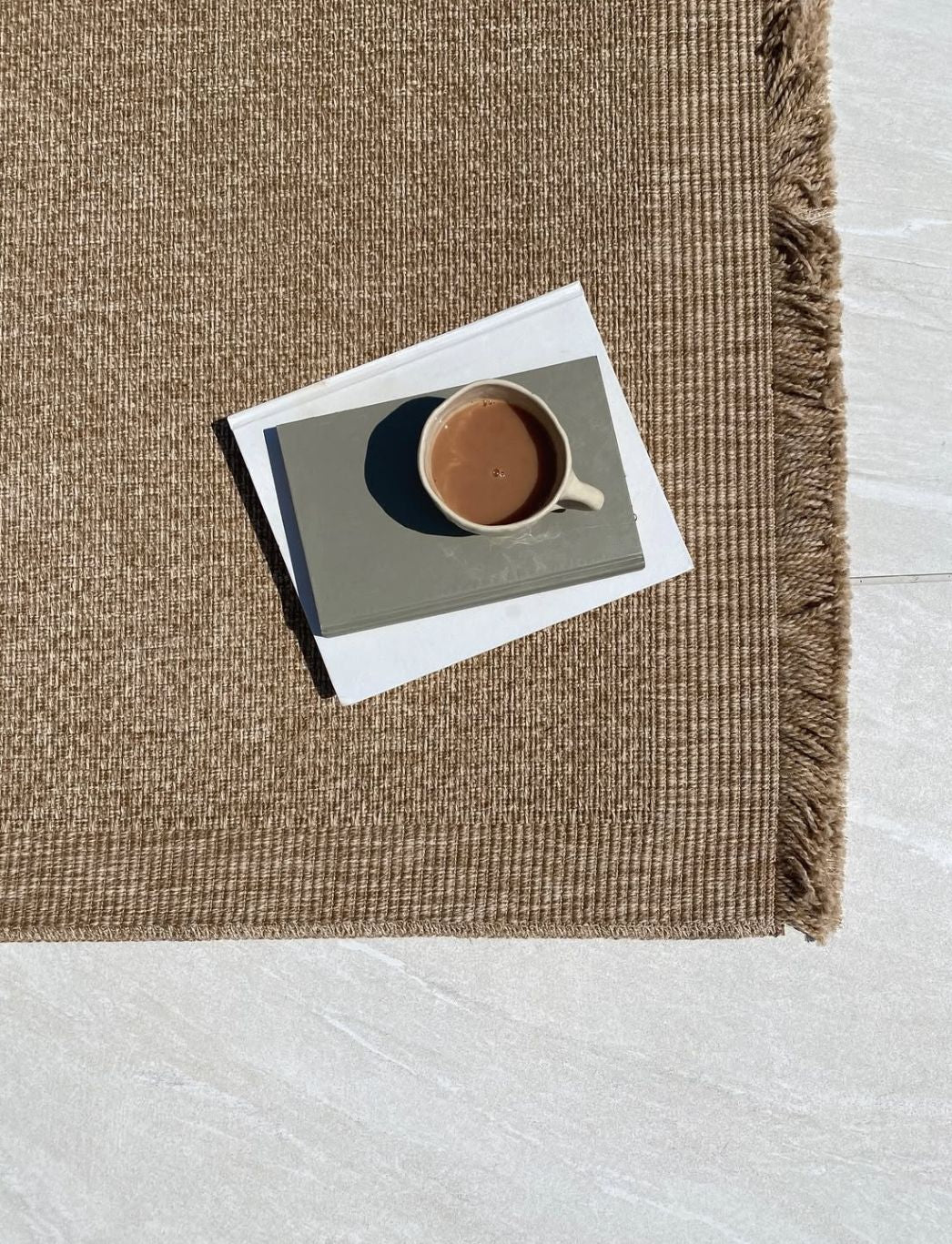Can Outdoor Rugs Get Wet? The Truth About Weather Resistance

Can outdoor rugs get wet? This question pops up in almost every consultation when clients want to upgrade their garden spaces. The quick answer is yes—outdoor rugs handle moisture much better than indoor ones. But here's what I've learned after working with dozens of different rugs: they're not all built the same when it comes to British weather.
My garden styling projects taught me that material choice makes or breaks an outdoor rug's performance. Polypropylene consistently outperforms other options for our changeable climate, fighting off mould and mildew effectively. Many rugs get sold as 'weather-resistant', but plenty fall short when faced with our regular downpours. Most outdoor rugs can cope with some moisture, though none are truly waterproof. Quality options use water-repellent treatments that buy you time before damage sets in.

Synthetic materials need minimal fussing and handle rain without immediate worry. Even the toughest rugs benefit from proper care, though. I've picked up plenty of hard lessons about what works and what fails spectacularly in British gardens.
This guide covers everything I've discovered about outdoor rug materials, explains what 'weather-resistant' actually means in practice, and shares the care techniques that keep these rugs looking fresh through every season our weather throws at them.
Can outdoor rugs get wet?
The truth about outdoor rugs and moisture comes down to understanding how they're actually built. Most manufacturers design these rugs to be water-resistant, not fully waterproof. This difference changes everything about how you use and care for them in your garden.

What 'weather-resistant' really means
Weather resistance isn't about blocking every drop of water—it's about managing moisture cleverly. A properly weather-resistant rug handles exposure to moisture, UV rays, and temperature swings without falling apart immediately. These rugs soak up much less water than indoor versions and dry far quicker after getting soaked.
Weather-resistant rugs can cope with:
Occasional downpours without instant damage
Spills and splashes from garden activities
Morning dew and everyday humidity
Brief encounters with moisture
But they're not magic shields against water. Woven fibres naturally absorb some moisture when they get wet. During heavy rain or if they're completely soaked, even quality outdoor rugs will eventually become saturated, which can affect how they look and perform over time.
I learned this lesson the hard way during my early garden styling days. A client's expensive rug looked perfect until it spent three days underwater during flooding. The water-resistant treatment only goes so far.

Can you leave outdoor rugs in the rain?
Yes, most outdoor rugs can stay out in the rain, particularly those made from synthetic materials like polypropylene. These specialist fibres dry quickly and fight off mould and mildew effectively. The key is how long they stay wet.
Light showers or brief downpours? Your outdoor rug should handle these without fuss. Extended wet spells or persistent rain need more attention though. Rolling up the rug temporarily gives the surface underneath a chance to dry completely.
Winter weather changes the game entirely. Snow and ice conditions call for indoor storage to protect both durability and appearance. Even the most weather-resistant rug needs occasional shelter from extreme conditions.
Can indoor outdoor rugs get wet safely?
Indoor/outdoor rugs offer flexibility but provide less moisture protection than dedicated outdoor models. Many use polyester weaves that feel softer and work in both settings. They resist water and UV rays reasonably well, though they shouldn't live outside permanently.
Polypropylene still wins for water resistance when you compare materials. It naturally repels water better than the polyester commonly found in indoor/outdoor designs. These hybrid rugs typically handle:
Light rain and occasional moisture exposure
Quick drying after getting wet
Decent protection against spills and splashes
For consistently wet environments, go with dedicated outdoor rugs made from polypropylene rather than hybrid options. Position your rug in covered or sheltered spots where it faces fewer weather challenges. This placement strategy, combined with smart material choices, keeps your outdoor rug looking fresh longer, even when British rain makes regular appearances.

Materials that handle moisture best
My years testing different rug materials in British gardens taught me which ones actually work and which ones fail spectacularly. Selecting the right fibre makes the difference between a rug that lasts years and one that turns into a soggy mess after the first proper downpour.
Polypropylene: the clear winner
Polypropylene wins every time in my outdoor projects. This synthetic fibre has a non-polar, hydrophobic structure that pushes water away naturally. When rain hits polypropylene rugs, the water beads up and rolls right off instead of soaking through—they dry remarkably fast.
What makes polypropylene perfect for our changeable weather? Its molecular makeup prevents moisture absorption completely, so these rugs keep their shape even after heavy rain exposure. The saturated hydrocarbon structure also fights UV damage effectively, which matters when our rare sunny days actually appear.
Polypropylene rugs have won me over with their practical benefits:
Mould and mildew simply won't grow
Spills wipe away without staining
Zero shedding or maintenance headaches
Cost less than natural alternatives
One interesting quirk: manufacturers can't dye polypropylene after production—colour gets added during manufacturing. This actually works in our favour outdoors, since the colour stays locked in permanently, resisting fade even under direct sunlight.

Nylon and polyester: the runners-up
Nylon performs well as a second choice, especially in high-traffic areas. It repels water and liquids naturally, though it soaks up slightly more moisture than polypropylene. These rugs handle sun exposure well, except they can get uncomfortably hot on bright days.
Polyester sits somewhere between polypropylene and nylon for moisture performance. While moderately water-resistant, polyester absorbs small amounts of moisture that can encourage mould growth in consistently damp conditions. Polyester rugs need:
Proper drainage underneath
Good airflow on all sides
Quick cleaning to stop moisture buildup
Some manufacturers blend polyester with polypropylene, combining the best of both materials. The polypropylene handles moisture resistance while polyester adds softness—creating a balanced option for our unpredictable weather.
Natural fibres: my expensive mistakes
Natural fibres look beautiful but taught me costly lessons in British gardens. Jute, sisal, and wool bring warmth and elegance indoors but absorb moisture like sponges, taking ages to dry and often deteriorating in the process.
Jute rugs aren't water-resistant at all—they become waterlogged easily and take forever to dry properly. This creates perfect breeding conditions for mould and mildew. I've seen expensive jute rugs ruined after just one wet week.
Natural fibres also attract insects that damage the rug structure, creating holes and speeding up wear. Wool rugs, despite feeling luxurious underfoot, shrink, warp, or develop mould when exposed to prolonged dampness.
For moisture-prone areas like patios, synthetic materials like polypropylene remain the smart choice. If you love the natural look, consider synthetic alternatives that mimic natural textures—many polypropylene rugs look identical to wool, sisal, or other natural fibres without the moisture vulnerabilities that cause expensive failures.

Water-resistant vs waterproof: know the difference
Shopping for outdoor rugs means wading through confusing marketing terms. The difference between "water-resistant" and "waterproof" affects how your rug performs when British weather turns nasty.
Why no outdoor rug is truly waterproof
Here's something that surprised me early on: outdoor rugs are water-resistant, not waterproof. True waterproofing means creating a complete barrier that stops any moisture from getting through. Sounds great in theory, but it comes with serious trade-offs.
Making a rug completely waterproof requires:
Special treatments that kill breathability
Materials that feel uncomfortable underfoot
Construction methods that make rugs stiff and inflexible
One manufacturer puts it bluntly: "An outdoor rug would need to be specially treated and sealed to become fully waterproof, which would have a detrimental effect on the comfort and breathability of the fabric". Most outdoor rugs stick to water-resistance instead—they repel moisture initially but don't block it completely.
How water-repellent layers work
Water-resistant rugs use protective treatments that create temporary barriers against moisture. These finishes work like shields, making water bead up and roll off instead of soaking straight in.
The resistance comes from several factors:
Tightly woven synthetic fibres that naturally push water away
Water-repellent coatings added during production
Solution-dyed methods that lock colour in while boosting resistance
"Many outdoor rugs go through a water-repellent finish, like a protective shield that fends off moisture". This technology gives you excellent protection against spills, light rain, and morning dew without making the rug feel plastic or uncomfortable.

What happens during heavy rain
Even the best water-resistant rug meets its match during extended downpours. The protective barrier gets overwhelmed eventually, and water starts penetrating the fibres.
"In heavy rain or submersion, water-resistant rugs may become saturated over time, and their effectiveness and appearance can diminish as a result". This happens gradually—water beads on the surface first, then slowly works its way in.
Extended exposure brings several problems:
Mould and mildew can develop underneath
Colours might fade or materials weaken over time
Drying takes much longer after heavy rainfall
"Prolonged exposure to wet conditions can lead to issues like mould, mildew, and accelerated wear, even when the fabric is designed to be mould-resistant". Good drainage and airflow help, plus giving rugs time to dry properly in sunlight when possible.
Understanding these limits helps set realistic expectations. Your outdoor rug handles getting wet just fine, but proper care—especially thorough drying after heavy rain—keeps it looking good and lasting longer.
Preventing mould, mildew, and damage
Good maintenance makes the difference between rugs that last years and ones that fail after their first wet season. Britain's unpredictable weather tests even rugs marketed as weather-resistant. I've learned through some costly mistakes that proper care prevents most moisture problems before they start.
How to dry rugs after rain
Quick action after rainfall saves rugs from long-term damage. I stand the rug upright first, letting gravity do most of the work as water runs off naturally. Stubborn moisture needs a wet/dry vacuum - this cuts drying time dramatically and gets water out of the fibres before problems develop.
Direct sunlight dries rugs fastest. I lay them flat in full sun or drape them over garden railings to get airflow on both sides. Proper ventilation speeds drying and stops mould before it takes hold. Once the top feels dry, I flip the rug to make sure the bottom side dries completely too.
Heavy downpours sometimes need more drastic steps. I bring rugs inside when possible or move them to covered areas until they're bone dry. Even quick-drying materials need proper airflow underneath - moisture trapped below the rug causes just as many problems as water sitting on top.
Using rug pads for airflow and drainage
Rug pads work as a barrier between your rug and damp surfaces. These simple solutions lift the rug slightly, creating vital space for air circulation and stopping water from pooling underneath. The airflow becomes especially important for synthetic rugs prone to trapping moisture.
Quality rug pads provide several benefits:
Better drainage after rain
Enhanced airflow beneath the entire rug
Less contact with potentially damp ground
Extra protection against ground moisture
The improved stability and comfort show immediately after installation. But the moisture management benefits matter more for outdoor use - they prevent the damp, musty problems that ruin rugs from below.

Tips for high-humidity areas
Coastal gardens and particularly damp British locations need extra attention. I always recommend quick-drying synthetic materials like polypropylene for these challenging spots. They resist moisture retention and dry rapidly after rain exposure.
Several practical approaches help combat high humidity:
Lift and air out rugs periodically, even when they seem dry
Mix equal parts vinegar and water to tackle early mildew signs
Raise furniture legs to improve airflow across the rug surface
Use specialised mildew-resistant sprays as preventative measures in extreme cases
When humidity consistently threatens rug condition, seasonal storage becomes worthwhile. During winter months or extended rainy periods, I clean rugs thoroughly, ensure they're completely dry, and store them rolled (never folded) in dry spaces like garages or sheds.
Caring for your outdoor rug year-round
Good care routines make the difference between a rug that lasts one season and one that looks fresh for years. My outdoor rug experiments taught me that even the toughest materials need proper attention to reach their potential.
Cleaning methods that work
My three-tier cleaning approach keeps outdoor rugs looking their best without overdoing it. Weekly maintenance takes minutes—a good shake gets rid of surface debris, or use a leaf blower if you've got one. I avoid vacuum beater bars on synthetic rugs as they can damage the fibres.
Monthly deep cleaning needs more effort: · Stiff brush sweep to remove embedded dirt · Garden hose rinse with mild dish soap for stains
· Thorough drying before putting back in place
Seasonal cleaning happens three or four times a year. Pick a sunny, breezy day and give the rug a proper wash with gentle detergent. Machine-washable options make this step much easier—just use a gentle cycle and ensure complete drying before placement.
The biggest mistake I see is people scrubbing stains instead of blotting them. Rubbing pushes the stain deeper into the fibres and can damage the weave.

Storage secrets that actually work
Winter storage protects your investment, especially during harsh months. I learned this lesson when frost damage ruined an expensive rug I left out one particularly brutal winter.
My storage routine starts with a thorough clean and complete drying—moisture trapped during storage creates mould problems . Roll rather than fold to prevent permanent creases that weaken fibres. Breathable wrapping works best—old cotton sheets or paper, never plastic which traps dampness.
Cool, dry storage spots work well. Basements, garages, or sheds keep rugs safe from temperature swings and moisture . I keep stored rugs off the ground using pallets or shelving.
Year-round placement strategies
Polypropylene rugs can stay outside all year, but harsh winter conditions test even the toughest materials . Constant freeze-thaw cycles damage fibres over time, causing fraying and weakening.
My clients often ask about rain exposure limits. Synthetic rugs handle getting wet, but staying saturated beyond 24 hours creates problems even with mildew-resistant materials . The ideal drying window is 6-8 hours—anything longer risks mould growth and unpleasant odours.
For protection during heavy downpours, position rugs in covered areas when possible. Temporarily bringing them indoors during extreme weather extends their life significantly . Rug pads create essential airflow underneath, reducing moisture buildup and mould risks.
Overnight drying outside works fine if no additional rain threatens. Draping over railings or fences improves airflow to both sides . The key is ensuring complete drying before the next weather event hits.
British weather demands flexibility with outdoor rug placement. Sheltered spots work better than fully exposed areas, and having a backup storage plan helps during particularly wet spells.

Conclusion
My garden design work across Britain taught me one clear truth: outdoor rugs can absolutely get wet, but success comes from understanding what you're working with. The material choice makes the biggest difference in how well your rug handles our unpredictable climate.
Polypropylene wins every time for British weather. Its water resistance and quick-drying performance outclass every other option I've tested. Nylon and polyester work decently, though they don't quite match polypropylene's moisture-handling abilities. Natural fibres look beautiful but belong indoors—rain turns them into maintenance nightmares.
The 'weather-resistant' label doesn't mean waterproof. No outdoor rug blocks water completely. Quality rugs use water-repellent treatments that give you time before problems start. Heavy downpours will eventually saturate even the best rugs, though.
Proper care extends rug life significantly. Quick drying after rainfall prevents most problems. Rug pads create crucial airflow underneath. Coastal areas and damp regions need extra attention—periodic airing and winter storage keep rugs fresh longer.
Clients ask whether they can leave outdoor rugs outside year-round. Synthetic materials can handle constant exposure, but harsh winters cause unnecessary damage. Storing during the coldest months adds years to your rug's life.
The best part about quality outdoor rugs is their resilience. My clients love how these additions change their outdoor experience. People spend more time in their gardens when comfort meets durability. Choose the right material, follow basic care routines, and your outdoor rug will handle whatever British weather throws at it while making your garden a more enjoyable place to be.

Key Takeaways
Understanding outdoor rug capabilities and proper care ensures your investment withstands British weather whilst maintaining its appearance and functionality.
• Outdoor rugs are water-resistant, not waterproof—they handle moisture well but will eventually saturate during prolonged heavy rain
• Polypropylene is the superior material choice, offering natural water repellency, quick drying, and excellent mould resistance for UK conditions
• Proper drainage and airflow are essential—use rug pads and ensure complete drying within 24 hours to prevent mould and mildew
• Regular maintenance extends lifespan significantly—weekly cleaning, prompt stain treatment, and seasonal storage during harsh winter months
• Strategic placement matters—position rugs in sheltered areas when possible and temporarily store during extreme weather conditions
The key to success lies in choosing synthetic materials over natural fibres and maintaining consistent care routines. Even the most weather-resistant outdoor rug benefits from protection during severe conditions and thorough drying after rain exposure.
FAQs
Q1. Can outdoor rugs withstand rain exposure? Most outdoor rugs are water-resistant and can handle rain. They absorb less water than indoor rugs and dry more quickly. However, prolonged exposure to heavy rain may eventually saturate the rug, so it's best to allow it to dry thoroughly after rainfall.
Q2. How long can outdoor rugs stay wet without damage? Ideally, outdoor rugs should dry within 6-8 hours and not remain wet for more than 24 hours. Even mildew-resistant rugs can develop problems if left saturated for extended periods. Ensure proper drying to prevent mould growth and maintain the rug's condition.
Q3. Are outdoor rugs suitable for year-round use in British weather? While synthetic outdoor rugs can withstand year-round exposure, it's advisable to store them during harsh winter months. Constant moisture and freezing temperatures can damage fibres and cause fraying. Storing the rug when not in use can significantly extend its lifespan.
Q4. What's the best material for outdoor rugs in damp climates? Polypropylene is the most suitable material for outdoor rugs in damp climates like Britain. It naturally repels water, dries quickly, and resists mould and mildew. This synthetic fibre outperforms other materials in handling moisture and maintaining its appearance in challenging weather conditions.
Q5. How should I care for my outdoor rug to prevent mould and mildew? To prevent mould and mildew, ensure proper airflow and drainage beneath the rug by using a rug pad. Clean the rug regularly, allow it to dry completely after rain, and consider periodic airing. In high-humidity areas, lift the rug occasionally to let both sides dry, and use vinegar solutions to tackle early signs of mildew.
People Also Asked
Can you leave an outdoor rug out in the rain?
While outdoor rugs are designed to withstand some moisture, prolonged exposure to rain can lead to damage. It's best to bring your rug inside during heavy rainfall or extended wet periods. If left out, ensure proper drying to prevent mold and mildew growth.
Will outdoor rugs get moldy?
Outdoor rugs can develop mold if not properly maintained. The key to preventing mold is ensuring good air circulation and quick drying. Regular cleaning and positioning the rug in a way that allows water to drain are essential practices to keep your outdoor rug mold-free.
Can I leave a rug outside overnight to dry?
Leaving a rug outside overnight to dry is generally safe, but consider the weather forecast. A clear, breezy night can be ideal for drying. However, if there's a chance of dew or rain, it's better to dry the rug in a covered area with good air circulation to prevent moisture buildup.
Can I leave an outdoor rug out in the winter?
While outdoor rugs are durable, harsh winter conditions can cause damage. It's advisable to store your outdoor rug in a dry, indoor space during winter months. This practice extends the rug's lifespan and prevents issues like freezing, which can break down fibers and backing materials.
What if my outdoor rug gets wet?
If your outdoor rug gets wet, act quickly to prevent mold and mildew. Hang the rug to allow water to drain and air to circulate. Use a fan to speed up the drying process if possible. Once dry, brush or vacuum to restore the texture and remove any debris that may have settled while wet.
Can an outdoor rug be left outside?
Outdoor rugs are designed for exterior use, but they still require care. While they can withstand some exposure to elements, it's best to bring them in during extreme weather conditions. Regular cleaning and proper positioning to avoid standing water will help maintain your outdoor rug's quality and appearance.
Do you have to wash outdoor rugs?
Regular cleaning is crucial for outdoor rugs. Aim to wash your outdoor rug at least once a season. For routine maintenance, shake off debris and vacuum regularly. Deep cleaning with mild soap and water helps remove stubborn dirt and refreshes the rug's appearance, ensuring longevity and hygiene.
Do outdoor rugs let water through?
Most outdoor rugs are designed to be water-permeable, allowing moisture to pass through. This feature helps prevent water from pooling on the surface, reducing the risk of mold and mildew. However, the degree of permeability can vary, so it's important to choose a rug suitable for your specific outdoor conditions.
Do outdoor rugs get smelly?
Outdoor rugs can develop odors if not properly maintained. Moisture, mildew, and trapped debris are common causes of smells. Regular cleaning, ensuring proper drying after rain, and addressing spills promptly can prevent unpleasant odors. For persistent smells, a mixture of vinegar and water can be an effective deodorizer.
Is a rug ruined if it gets wet?
Getting wet doesn't necessarily ruin a rug, especially if it's designed for outdoor use. However, prolonged exposure to moisture can lead to damage. The key is quick action: remove excess water, elevate the rug for proper air circulation, and ensure it dries completely. Proper care after getting wet can prevent long-term damage.
Do outdoor rugs need to be covered?
While not always necessary, covering outdoor rugs can extend their lifespan. A cover protects against harsh sunlight, heavy rain, and debris. Consider using a waterproof cover during extended periods of non-use or severe weather conditions. This extra step can significantly reduce wear and tear on your outdoor rug.
How do I dry my outdoor rug?
To dry an outdoor rug effectively, start by removing excess water with a squeegee or towels. Hang the rug over a railing or sturdy clothesline to allow air circulation on both sides. Use fans to increase airflow and speed up the drying process. Ensure the rug is completely dry before placing it back in its designated area.
Can outdoor rugs be left outside in the rain?
While outdoor rugs are designed to withstand some moisture, continuous exposure to rain can lead to damage over time. It's best to bring the rug inside during heavy or prolonged rain. If that's not possible, ensure the rug is positioned to allow proper drainage and dry it thoroughly after the rain stops.
How to prevent outdoor rugs from mold?
Preventing mold on outdoor rugs requires proactive care. Ensure good air circulation and quick drying after exposure to moisture. Regularly clean the rug and the surface beneath it. Consider using a mold-resistant spray periodically. Elevating the rug slightly off the ground can also help prevent moisture accumulation and subsequent mold growth.










Leave a comment